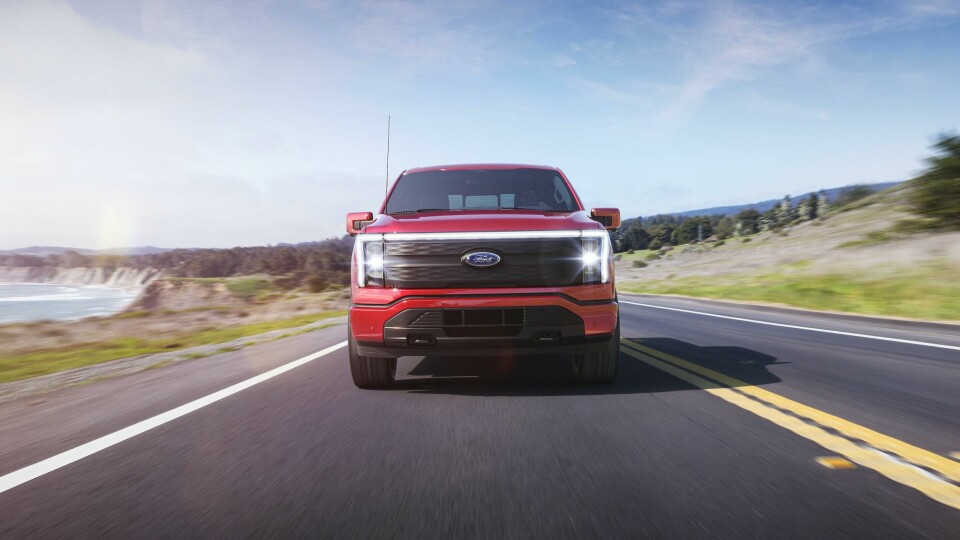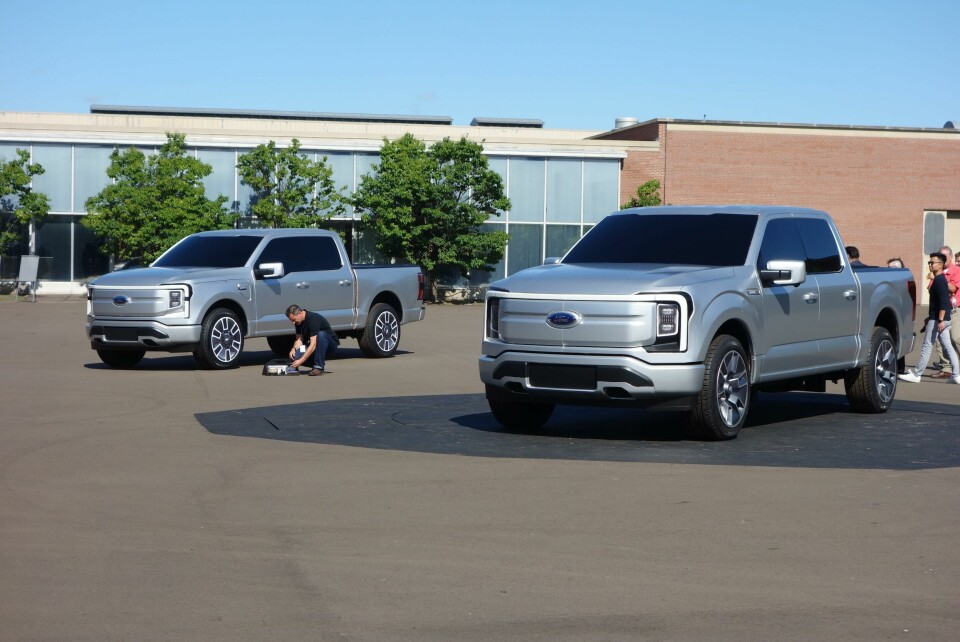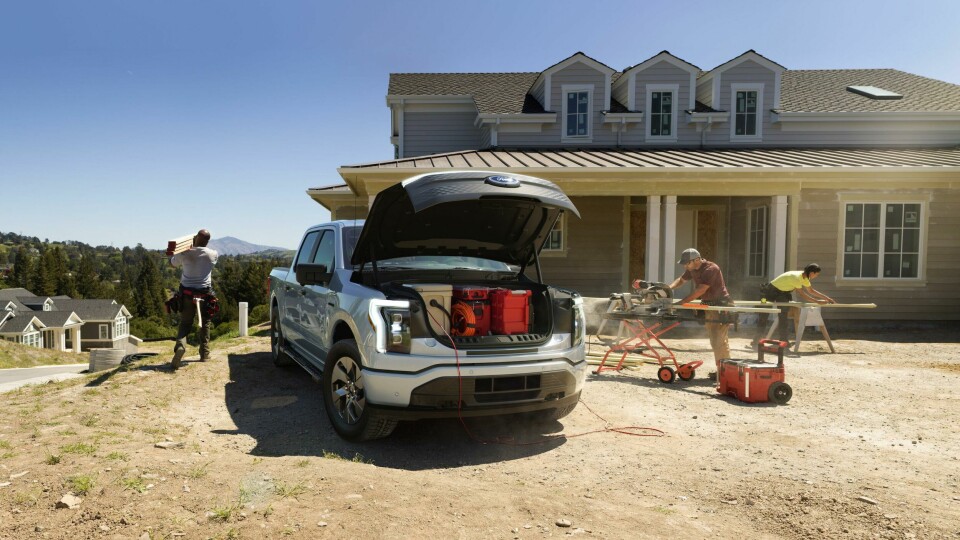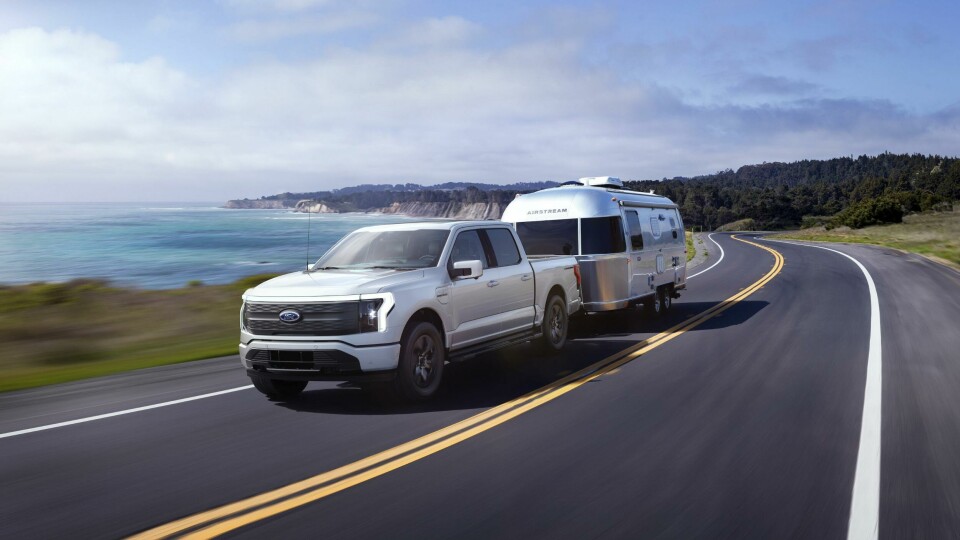
F-150 Lightning: Ford’s Truck of the Future?
Ford is betting that any scepticism concerning electrification of the F-series will be blown away by its sheer ability. And with more pulling power, space and versatility than ever before, should we doubt them? Car Design News spoke to Ford’s global design director Todd Willing ahead of the full reveal
The Ford F-150 Lightning is back and this time it’s an EV. The sleeper hit of F-series nameplate first hit the dealerships back in 1993 before bowing out in 2004. Now it has been electroshocked back to life, bringing its famed acceleration with it alongside a 300-mile range battery.
But this is no pumped-up lifestyle wagon – far from it. This is a working truck true to the F-series spirit, with Ford leaning heavily into its ‘built Ford-tough’ mantra. And so, we have monumental levels of torque, 775 lb.-ft. the most of any F-150 ever, a high-tech frunk and the ability to power your home.
The launch of the Lightning could not be more in tune with the zeitgeist. The day before the official unveiling, President Biden, who built his political campaign around a vision of green jobs revolution, was filmed flooring it at the Ford complex in Detroit.
“The F-150 Lightning represents a defining moment as we progress toward a zero-emissions, digitally connected future,” said Bill Ford, executive chair, Ford Motor Company. “F-Series is America’s best-selling truck for 44 years, the backbone of work across the country, and a trusted icon for generations of customers. Now we are revolutionising it for a new generation.”
In terms of design, it bears strong relation to its ICE forebears, the most noticeable change coming on the front end. Signature lightbars run across the front and rear with three new ‘grille’ designs offering a variety of hard-faced familiarity. A sculpted hood promises to reduce drag, while the grilles replacing the air intake holes include a smoother, textured surface.
The interior features some clever design touches: the selector disappears into the centre console to allow room for a fold-out worktable, the frunk has power and charging capabilities and the Lightning features the largest screen ever to grace a Ford. The cab and bed dimensions match its gas-fuelled counterpart, and the seats recline nearly 180 degrees.
The Lightning is clearly a very significant launch for Ford. It will be assembled at the new Rouge Electric Vehicle Center, which claims to be a zero-waste-to-landfill site, while Ford is investing US$700 million into the historic Rouge Complex.
In the move to EV, Ford is betting that increased performance and functionality will win over any sceptics. As global design director, Trucks & SUVs, Todd Willing points out, the Lightning can now do truck-like tasks from the back and front thanks to the space freed up by the battery.
Car Design News spoke to Willing ahead of the full reveal.
Car Design News: How has the move to EV impacted the design of the Lightning?
Todd Willing: Trucks are pretty specific when it comes to the expectation of their customers. What we want is to genuinely represent what the product is and how it operates. We wanted to transition to something more solid, but still offering up a consistent built-Ford tough message.
CDN: How does that manifest itself in the design details?
TW: Well, obviously avoiding fragile sections so it’s always got that robustness around every element. And the general proportions, of course – you will have seen that it has a connected light bar that runs across the width, so it’s framed by these very strong pillars either side and connected across the top to give you that corner-to-corner impression. It gives a message of presence and distinction over the traditional layout of lights separated by a grille.

CDN: And what opportunities were there in this move to EV?
TW: We had plenty of interaction with customers and the feedback was they wanted something progressive, but they didn’t necessarily want a science project. It must do truck things. And it has to clearly convey that it will deliver on the expectations of the truck customer at a glance.
The single biggest opportunity when you remove the ICE power pack out of the front end is lockable storage in the frunk. It’s a pretty big space, 400 litres and lives up to the Ford-tough in terms of the strength of it – it’s not just a plastic bin to put stuff in, it has 400-pound capability alongside big volume. Basically, it’ll do truck things in the front and the back, which is really, important to the truck customer. I guess there’ll be some level of discovery for different folks and different use cases, but a lot of work went into mapping particular use cases for the frunk and we feel like we’ve got something unique to offer. That’s going to be a big draw to the EV.

CDN: Is it a new platform?
TW: It’s a new frame. The F-150 truck is developed over a long period of time, so that there’s some level of commonality with some components but the design of frame with the power pack and the motor layout is bespoke.
CDN: The original Lightning had a 5.8-litre V8. How will people take to the relative quiet of an EV?
TW: You’re right there have been some emotive versions of the F-series that play up some of those more visceral attributes: Raptor is one and Lightning was another. As with all EVs there is opportunity for some level of augmented sound, but the focus of this F-series is to do everything better. The lack of engine noise triggers the sense in a different way; the acceleration gives you that thrill. But even when towing where you would notice the load on the back of an ICE truck impacting performance, when you load up the Lightning the torque is so strong, the gap between being laden and unladen is far smaller. Yes, you do certainly get a different experience, but it’s a pretty powerful and exciting one.
CDN: You might look at the F-series as being a very 20th century vehicle but if you look at the list of innovations – Five Star Cab, anti-lock brakes, air updates – you could argue it has often been a more progressive product.

TW: Yeah, absolutely. And you didn’t mention the shift aluminium for the body and the ecoboost technology in the ICE. Over time, it’s always been at the tip of the spear in a very purpose-driven segment where there’s jobs to do, but Ford has always made a point of aligning that with development and opportunity.
CDN: People get quite emotional when it comes to the Lightning. How aware are you of expectations and conventions?
TW: It is always an important consideration when you’re dealing with the iconic name plates. We saw it in spades with Mach E, and that’s proven to be very much a representative of what Mustang can be – it’s expanded the genre. In the case of the F-150 EV, the Lightning it lives up to the performance side of it, the body style in terms of the supercrew cab and five-and-a-half-foot box. The majority of our trucks go out in that configuration, so it’s what people really want the most. It is a short walk, I think, when you combine the performance and power of EV and the Lightning nomenclature sits pretty well on it.




















